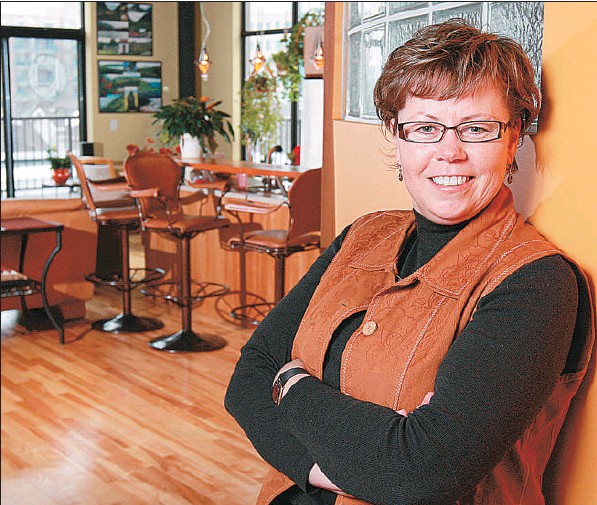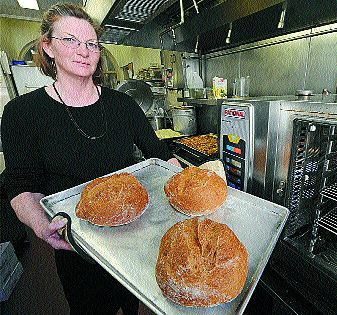Favourable interest rates on line of credit give homeowners another way to borrow money
Denise Deveau
Sun

Dyna Vink decided to use some of the equity she had her in home to finance the purchase of a new car. JOHN MAJOR / CNS
When Dyna Vink decided to start anew after her divorce, one of the first decisions she made was to leverage some of the equity she had in her home to purchase a new car.
“The interest rates were far more favourable with a home equity line of credit than a car loan,” she says.
While the Ottawa-based marketing professional has always had an unsecured line of credit, she admits she hasn’t used it since she discovered it makes much more sense to go the home equity route. She can even create different accounts within her Scotiabank home equity line of credit to separate RRSP loans from other purchases and investments.
“When you’re only paying three per cent on your loans — that’s pretty nice,” she admits. “It’s way better than the 18 per cent credit cards are charging.”
Some people might get nervous at the thought of putting up their hard-earned equity to fund other investments — whether to buy a car, renovate a home or invest in a second property. But experts say that with the right approach, using your home equity can be a savvy way to manage your finances.
Of course, it’s important to do the homework when making any investment decision.
“If you are investing in a home renovation for example, make sure that it’s something you can afford — and that the renovation will go toward increasing the value of your home,” says Myron Knodel, director of tax and estate planning for Investors Group in Winnipeg.
If you do decide to go the reno route, a home equity loan can offer a number of advantages, provided you’re in a reasonably healthy cash-flow position. You have the flexibility to pay down the loan by any amount you wish and can take advantage of highly favourable interest rates.
If you don’t have enough equity to make it worth your while, another option would be to refinance your mortgage — but check to see if there are any penalties before making that decision, advises Knodel.
Karen Leggett, head of home-equity financing for Royal Bank of Canada (RBC) in Toronto, says the banks have made it much easier for homeowners by developing a whole range of options within their home-equity financing vehicles. These flexible plans can be structured into “segments” that combine revolving credit lines, as well as fixed- and variable-rate mortgages so you can borrow and transfer funds under your terms of choice. Typically the limit is set at 80 per cent of the equity value of your property. “What you do with those [options] depends on your risk profile and what you can afford.”
She adds that the best part of a segmented equity line of credit is that it can be a great tracking mechanism for understanding how you are spending your money and your interest payments. It can also let you restructure your finances whenever you like in order to take advantage of various rate options.
“You can start by using a credit line for your renovation for example. Once the renovation is done, you can then flip the balance to a fixed or variable rate mortgage [within the line of credit] to lower your rates even more.”
Despite the economic crisis, having some home equity financing to play with could turn out to be more advantageous than you might think. For anyone who has been holding back on using their home equity to renovate for example, the recent federal Home Renovation Tax Credit (HRTC) makes it an opportune time to get the job done. With the HRTC, homeowners can claim a 15-per-cent tax credit for a minimum of $1,000 and up to a maximum of $10,000 worth of renovations done between Jan. 27, 2009 to Feb. 1, 2010. (The maximum allowable credit is $1,350.)
“Don’t do the renovation simply for the sake of getting the credit, but if you were planning one within the next four or five years, you may want to move that up to 2009,” says John Turner, director of mortgages for Bank of Montreal in Toronto.
It is also an ideal time for anyone who has had an eye on securing a second property, says Leggett. “Prices are down, and the interest rates are lower than they have been in at least 10 years. Leveraging your home equity to [buy another property] is a great strategy because the market has never been more attractive.”
Turner says whatever your choice, “Leveraging equity is an important part of a wealth accumulation strategy. But in order to do it right, you need to sit down with an accredited financial planner and look at whether you have the right risk profile for it. More importantly, you have to know when it’s the right time to retire your debt and capitalize on your wealth.”
© Copyright (c) The Vancouver Sun






